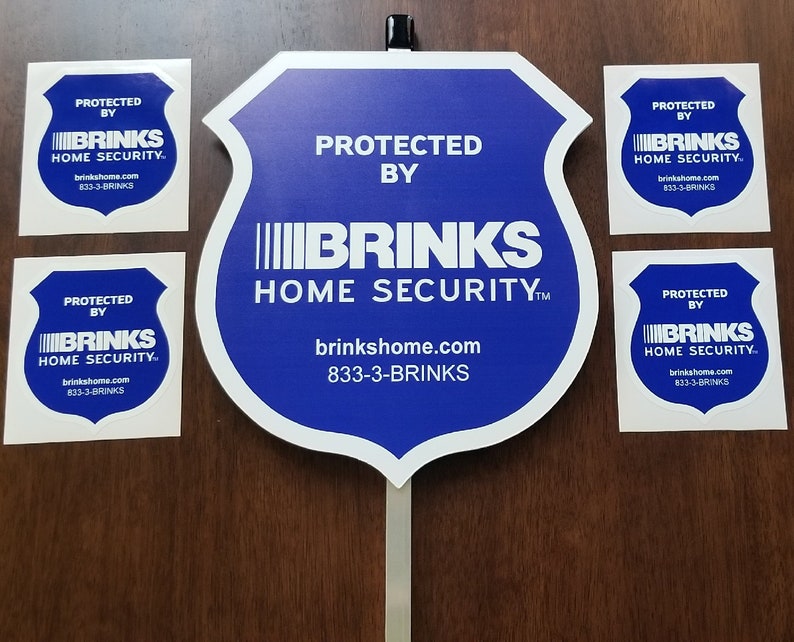
- #Brinks security stickers install
- #Brinks security stickers professional
- #Brinks security stickers series
That can be a lifesaver in an emergency situation where you’re unable to call 911 yourself.

#Brinks security stickers professional
Professional monitoring mobilizes the appropriate people when your alarm goes off. And because they rely on batteries, they can run out of power if you’re not diligent about replacing them. The drawback is that network interference and outages can disrupt a wireless security system’s abilities. They are also easy to upgrade, allowing you to add devices when needed.
#Brinks security stickers install
Wireless security systems are easier to install than wired ones. The system essentially creates a miniature network that uses radio waves, not wires, to send notifications to you and/or the managing security company. Wireless Security SystemsĬomponents in a wireless security system use a cellular network to communicate with the control panel. Unfortunately, some burglars know that they can cut a home’s phone line to disable the system. If the wired security system is managed by a professional security company, the company will use phone lines to communicate with you after a breach. Wired systems are also less likely to run out of power compared to wireless systems. Hardwired systems are reliable in that they won’t succumb to any interferences, network outages or other issues.
#Brinks security stickers series
In a wired security system, sensors and other components are connected to the central control panel by a series of wires.

Most security companies offer both wireless and wired systems. When warranted, the company will contact the appropriate authorities in your area as well as your emergency contact on file. A security expert may then communicate with the you to determine the next steps. If the system is breached, it notifies the company to respond. Several companies offer security systems that they monitor themselves. Professionally-Monitored Security Systems

Then, it’s up to you whether or not to call the police, fire department or other emergency personnel. When a breach occurs, the DIY system will sound a high-decibel alarm to alert you. Installing a security system yourself allows you to place the components anywhere, customizing the system to your liking. Monitoring a security system yourself is always an option and there are plenty of DIY security systems on the market. The right security system for your home will depend on your specific needs. Not only will the system secure your home, but it will also give you peace of mind as you go about your daily business. If you live in a high-crime area, go out of town frequently, keep valuables in your home or live alone, you may want to have a security system installed. They let the potential intruder know that the home has an alarm system, which would get them caught. Video doorbells and security cameras allow you to see what’s going on outside the home, while yard signs and stickers work to deter any potential intruders by acting as a warning system. If not, the lights will alert the homeowner and give them a good view of what’s going on outside. If there is an intruder, the lights may scare them off. Instead, they turn on and flood the area with light. Floodlightsįloodlights act like motion sensors for a home’s exterior, except they don’t cause an alarm to sound when they are tripped. Motion sensors and glass-break sensors work similarly. If that circuit is broken while the system is armed, it will send a message to the control panel, which will then sound an alarm. When the door or window is closed, these pieces should touch and create an electrical circuit. Two pieces make up door or window sensors-one that is installed on the actual door or window and another installed on the door frame or window sill. Arming or disarming an alarm with a control panel typically utilizes individualized passcodes or voice commands.

Authorized persons can use the control panel to arm or disarm an alarm. Control PanelsĬontrol panels are the central point of command for a home security system. That control panel will then sound an alarm and alert either the homeowner or the authorities, depending on the type of security system installed. Sensors, placed both inside and outside the home, will alert a security system’s central control panel when breached.


 0 kommentar(er)
0 kommentar(er)
